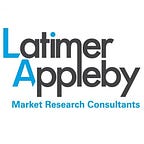Data to knowledge to understanding
“We talk a lot about market research and also the need for delivering real insights from primary research studies. This article is intended to demonstrate how we move from data to knowledge and ultimately to understanding. And so deliver those all important insights.”
Primary market research should be seen as a process moving through the three main phases. Starting first with data. Next to knowledge. And finally, on to understanding.
In summary, a consumer research project should seek to follow these phases by:
- Listening to people, or engaging with them (the Data)
- Assimilating the information from that engagement (the Knowledge)
- Providing insights, based on the results of the processed information (the Understanding)
Here I am using the example of a retail destination e.g. a shopping centre, a retail park or other similar scheme, to show exactly what I mean by each of these different phases.
Phase 1. Data
In the retail destination example we would be collecting data from respondents, who here would be the shoppers, or the centre’s visitors.
The sort of data we might collect would include things such as:
- The numbers of shoppers who visit the scheme every day vs. the numbers who visit several times a week vs. the numbers who visit weekly etc.
- The numbers of shoppers whose trip today will last up to 20 minutes, vs. up to 40 minutes, vs. up to one hour, vs. up to two hours etc.
- The numbers of shoppers who are shopping on their own, vs. shopping with another person, vs. shopping with two other people, vs. shopping with three etc.
- The numbers of shoppers making a purchase that day of any non-food items, and also the numbers those who stopped for something to eat or drink during their trip.
- The numbers of males, and the numbers of females.
- The different ages of our shoppers.
This is all very interesting, but it is only the data.
Phase 2. Knowledge
Next we look at the knowledge we can get by processing that data we have collected. This is where we arrive at what we would call the findings or the results. These results might be in the form of things like averages, or profiles for example:
- Average visit frequency to the scheme.
- Average length of time spent shopping in the scheme i.e. the dwell time.
- Average party size of our shoppers.
- Non-food conversion and Catering conversion proportions (i.e. % of people buying).
- Age profile of our shoppers.
- Gender profile of our shoppers.
Again, this is interesting, and in fact, even more interesting than the data alone. But it still doesn’t give us real understanding or insights of what is actually going on here.
That comes from the third stage, the understanding.
Phase 3. Understanding
The insight and hence understanding comes once we are able to take the knowledge and learn from it. As such, we might then end up with a series of insights or factual ‘nuggets’. Using the examples given so far, these conclusions might be something along the lines of the following:
- Visit frequency is higher than we might expect.
- Average party size is actually smaller than we would expect.
- The age profile is in line with an average scheme, but there is a clear skew towards high numbers of male shoppers.
- The non-food conversion is slightly below average, but the catering conversion is significantly below what we might expect.
- Dwell time appears low, and would appear to be the main opportunity for future improvement, i.e. rather than trying to improve the visit frequency.
As a result, we might conclude the following about this particular centre.
The biggest opportunity for growth in this particular scheme appears to be around driving dwell time. Firstly by improving the catering provision, whilst also enhancing the retail mix, by adding more female fashion. This will help encourage more female shoppers, plus family groups, which in turn, should increase catering conversion, and in turn impact the centre’s dwell time. If the current average visit frequency can be broadly maintained, then the annualised dwell time will increase, resulting in strong growth in sales turnover within the centre.
There you have it. In three phases: Data to knowledge to understanding.
